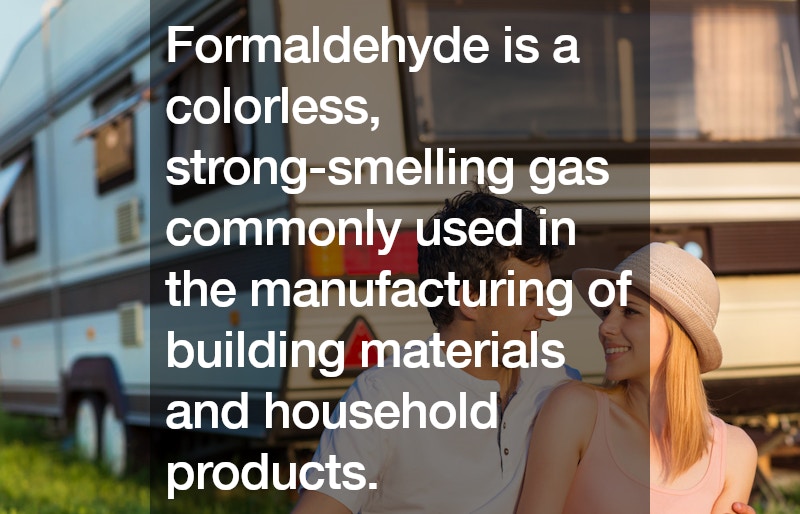Everything You Should Know About Formaldehyde in Mobile Homes


Formaldehyde is a chemical compound that has garnered significant attention due to its presence in various building materials and household products. For residents of mobile homes, concerns about formaldehyde exposure are particularly relevant. Understanding what formaldehyde is, how it can affect health, and ways to mitigate exposure is crucial for ensuring a safe living environment. Here’s everything you need to know about formaldehyde in mobile homes.
What is Formaldehyde?
Formaldehyde is a colorless, strong-smelling gas commonly used in the manufacturing of building materials and household products. It is found in pressed wood products such as particleboard, plywood, and fiberboard, which are often used in the construction of mobile homes.
Additionally, formaldehyde is used in glues, adhesives, and insulation materials.
Why is Formaldehyde Used in Mobile Homes?
The use of formaldehyde in mobile homes primarily stems from its role in the production of pressed wood products. These materials are favored for their durability, cost-effectiveness, and versatility. Formaldehyde-based resins are used to bind wood particles together, enhancing the structural integrity of the materials. However, this also means that formaldehyde can be released into the air over time, especially in enclosed spaces like mobile homes.
Health Effects of Formaldehyde Exposure
Exposure to formaldehyde can have various health effects, depending on the level and duration of exposure. Short-term exposure can cause irritation of the eyes, nose, and throat, leading to symptoms such as burning sensations, coughing, and respiratory distress. Long-term exposure to formaldehyde has been linked to more serious health issues, including an increased risk of cancer. The International Agency for Research on Cancer (IARC) classifies formaldehyde as a human carcinogen, emphasizing the importance of minimizing exposure.
Formaldehyde Regulations and Standards
To protect public health, several regulations and standards have been established to limit formaldehyde emissions from building materials. In the United States, the Environmental Protection Agency (EPA) has set emission standards for formaldehyde in composite wood products. The Department of Housing and Urban Development (HUD) also has specific standards for formaldehyde emissions in mobile homes, requiring manufacturers to meet certain limits to ensure safety.
Identifying Formaldehyde in Mobile Homes
Residents of mobile homes can take steps to identify and assess formaldehyde levels. One approach is to conduct air quality testing using formaldehyde detection kits, which are available for home use. These kits can provide an indication of the presence and concentration of formaldehyde in the indoor environment. Additionally, paying attention to symptoms of formaldehyde exposure, such as persistent irritation of the eyes, nose, or throat, can also signal elevated levels.
Reducing Formaldehyde Exposure
There are several strategies to reduce formaldehyde exposure in mobile homes:
-
Ventilation: Improving ventilation is one of the most effective ways to reduce formaldehyde levels. Opening windows and using exhaust fans can help disperse formaldehyde and other indoor pollutants.
-
Air Purifiers: High-efficiency particulate air (HEPA) filters and activated carbon filters can help remove formaldehyde from the air. Investing in a quality air purifier designed to target formaldehyde can significantly improve indoor air quality.
-
Material Choices: When renovating or furnishing a mobile home, choose low-formaldehyde or formaldehyde-free materials. Look for products labeled as meeting low-emission standards, such as those certified by the California Air Resources Board (CARB).
-
Humidity Control: High humidity levels can increase the release of formaldehyde from building materials. Using dehumidifiers and maintaining indoor humidity at around 30-50% can help mitigate formaldehyde emissions.
-
Sealing and Coating: Sealing exposed pressed wood surfaces with a non-toxic sealant can reduce formaldehyde emissions. This is particularly useful for older mobile homes where the formaldehyde-based resins may still be off-gassing.
Understanding the presence and effects of formaldehyde in mobile homes is essential for maintaining a healthy living environment. By being aware of the sources of formaldehyde, recognizing the potential health risks, and implementing strategies to reduce exposure, mobile home residents can significantly improve their indoor air quality. Ensuring compliance with regulations and opting for low-emission materials are proactive steps toward a safer, healthier home.
.
